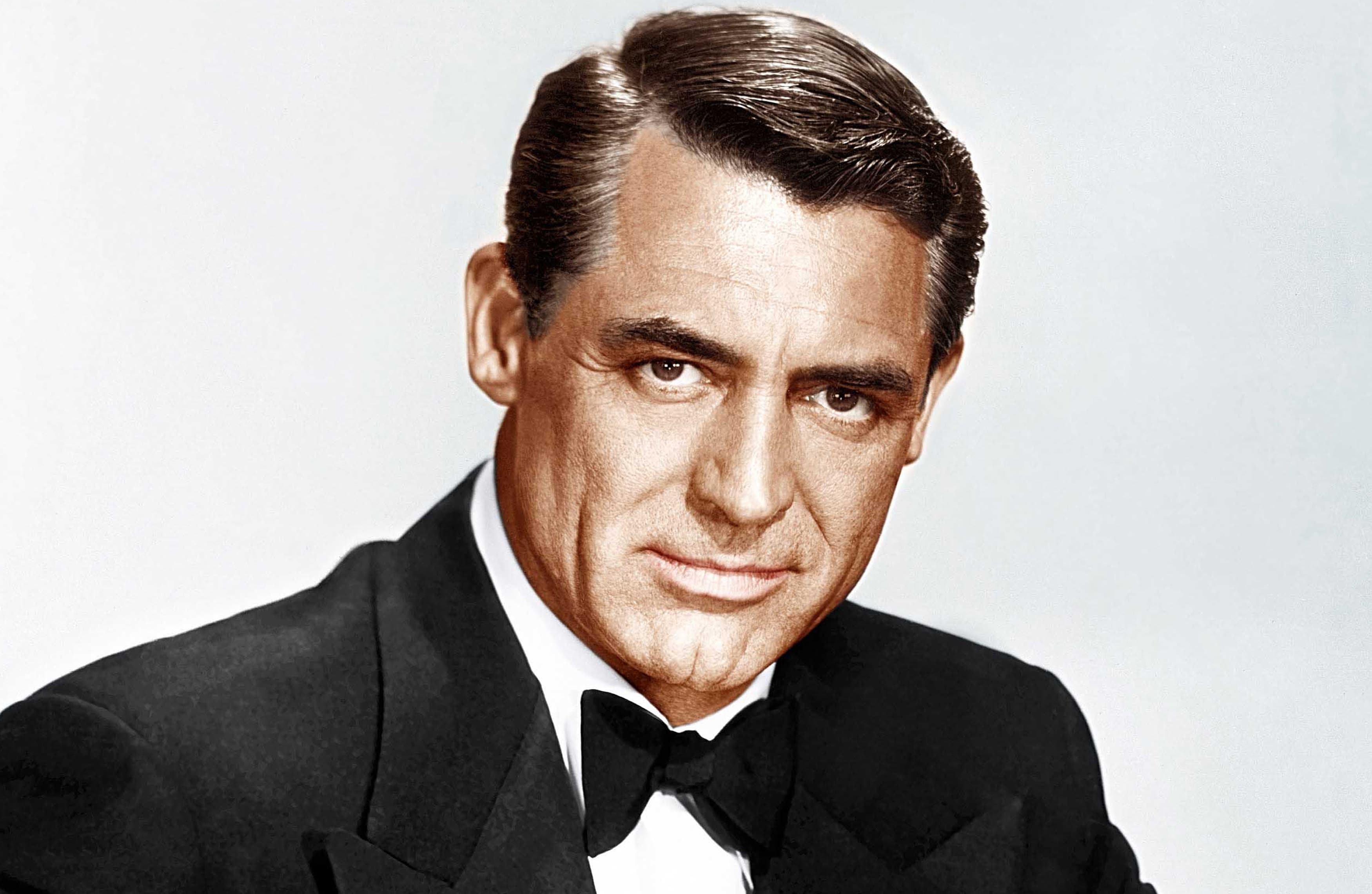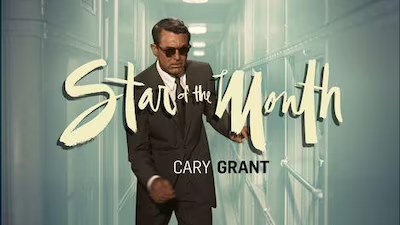Cary Grant

About
Biography
Filmography
Family & Companions
Bibliography
Biography
"By Bryce Coleman" opposite Constance Bennett gave Cary Grant his first financial hit, thanks to a share of the hefty profits, while "The Awful Truth" (1937) co-starring Irene Dunne made him a bona fide movie star. Basing much of his performance and mannerisms on the latter film's director, Leo McCarey, Grant gave full reign to the effortlessly charming persona he would be forever tied to with his role in "The Awful Truth." This began a remarkably successful run for the actor, confirmed years later by director and cinema historian Peter Bogdanovich, who noted that, "After The Awful Truth, when it came to light comedy, there was Cary Grant and then everyone else was an also-ran." Over the next four years, Grant starred in an unmatched number of hit films, honing his burgeoning image to a fine gloss with each successive outing. Grant and Hepburn re-teamed twice more to perfect the screwball comedy, first with director Howard Hawks in the classic "Bringing up Baby" (1938), quickly followed by "Holiday" (1938), once again under the guidance of Cukor.
More versatile than he was often given credit for, Grant also convincingly played a man of action in films like the rousing adventure "Gunga Din" (1939) for director George Stevens and Hawk's revered aerial drama "Only Angels Have Wings" (1939). He further perfected the screwball comedy, opposite Rosalind Russell, in "His Girl Friday" (1940) and "My Favorite Wife" (1940), which re-teamed him with McCarey and frequent leading lady Irene Dunne. That same year, the smash hit "The Philadelphia Story" (1940) not only broke box office records, single-handedly revived Katharine Hepburn's flagging career, and won two Oscars, but additionally solidified Grant's imperturbable screen persona into a verifiable archetype. So effortlessly effective was the actor that Grant even managed to elevate subpar material such as the melodrama "Penny Serenade" (1941), which earned him his first Oscar nomination.
In one of his most fortuitous and beneficial professional collaborations, Grant worked with the great Alfred Hitchcock for the first time on the romantic psychological-thriller "Suspicion" (1941), opposite Joan Fontaine. In a surprisingly effective break from his usual role type, Grant portrayed a handsome scoundrel suspected of murder. Famously unimpressed with thespians, director Hitchcock would later refer to Grant as "the only actor I ever loved in my whole life."
Although still a major box office draw, the harsh new realities brought on by World War II tempered audience's taste for frivolous romantic-comedies, and for the first time Grant's career faltered. One commercial bright spot of the period was his work in director Frank Capra's adaptation of the stage play "Arsenic and Old Lace" (1944). Although a hit with critics and audiences, Grant later stated that his admittedly over-the-top performance in the macabre comedy was one of his least favorites. Cast as a poor Cockney drifter in London's East End, Grant essayed a character closer to his personal origins than ever before in the drama "None But the Lonely Heart" (1944). And while it garnered the actor praise from critics and his second Academy Award nomination, the deeply flawed character was so far removed from the silky-smooth charmer he had become known for, that audiences simply could not accept him in the role. After the failure of the film, Grant would never again stray so far from his established persona.
Hitchcock once again provided Grant with some of his best work - not to mention a much needed hit film - in "Notorious" (1946), a masterful espionage thriller co-starring Ingrid Bergman and Claude Rains. Other efforts of the period, such as the mildly diverting fantasy "The Bishop's Wife" (1947), kept Grant on screens, but the successes were fewer and farther between than they once had been.
A serial marrier, Grant would wed a total of five times during his life, to such women as troubled heiress Barbara Hutton and actress Betsy Drake, who he met on the set of the romantic-comedy "Every Girl Should be Married" (1948). After exchanging vows the following year, the couple would appear together on screen once more in "Room for One More" (1952). With his background in vaudeville and broad comedy, Grant was disdainful of Method acting and wary of the new generation of young stars, who practiced it like Marlon Brando and James Dean. As he closed in on 50, the former king of the box office sensed his relevance beginning to wane, and as early as 1953, began making public rumblings about his imminent retirement. Thankfully, he was tempted back by Hitchcock to co-star with Grace Kelly in "To Catch a Thief" (1955), and later opposite Eva Marie Saint in "North by Northwest" (1959), considered by many to be the two most successful collaborations from the actor-director pair. After co-starring with Sophia Loren in "The Pride and the Passion" (1956), Grant fell madly in love with his Italian leading lady and pursued her ardently - even asking her to marry him - despite being married to Drake and Loren being involved with her soon-to-be-husband, Carlo Ponti.
Always a keen businessman, Grant also began his own production company in the late-1950s, mounting such features as the wartime comedy "Operation Petticoat" (1959), co-starring Tony Curtis.
Struggling to reconcile the disparities of his suave onscreen persona with the humble origins of Archie Leach, Grant became increasingly bitter and unhappy. His increased dissatisfaction with the film business did little to help matters. With Grant's marriage to Drake foundering, it was she who encouraged him to join her in a new psychiatric experiment employing the little-understood hallucinogenic drug LSD. Grant agreed, and for a time, he claimed that it helped his outlook a great deal, loosening inhibitions and lowering defenses. In the long run, however, it would not provide him with the tranquility he so desperately sought.
Despite his discomfort with the marked differences in their ages, he played leading man to the much younger Audrey Hepburn in Stanley Donen's Hitchcock-esque "Charade" (1963). A year later, he took on a role as a confirmed beach bum reluctantly forced into the role of protector in the WWII comedy-adventure "Father Goose" (1964). Though considered one of his more lightweight efforts, Grant described the role to be the one closest to his real life personality.
Having divorced Drake three years prior, Grant married the much younger actress Dyan Cannon in Las Vegas in 1965 and the union produced his only child, Jennifer Grant, the following year. His fourth marriage, it was also one of his rockiest, and by the time Grant's final film "Walk, Don't Run" (1966) was released, Cannon - who later accused her husband of verbal and physical abuse - was already preparing for divorce. Bored with the business of filmmaking and wanting to spend more time with his daughter, Grant announced his retirement from the screen in 1966 and despite several high-profile attempts to lure him back, he would never act in a film again.
In the years that followed, Grant remained active, joining the board of directors for several companies and organizations, including the perfumer Faberge. By all accounts he enjoyed the fruits of semi-retirement and was genuinely touched when he was honored with an Academy Award for Lifetime Achievement in 1970. Grant had also managed to reconnect and reconcile with his mother, Elsie, who had been de-institutionalized in the 1930s. The two would remain close until her death at the age of 95 in 1974. Grant married for the fifth and final time when he wed British publicist Barbara Harris in 1981. Later, he toured the country with a one-man audience participation show, "A Conversation with Cary Grant." It was while preparing for one such performance at the Adler Theater in Davenport, IA on Nov. 29, 1986 that he suffered a cerebral hemorrhage, brought on by a stroke. Cary Grant died later that night at the age of 82.
Filmography
Cast (Feature Film)
Producer (Feature Film)
Misc. Crew (Feature Film)
Cast (Special)
Misc. Crew (Special)
Cast (Short)
Life Events
1917
Joined a travelling acrobatic troupe
1920
Arrived in New York with acrobatic troupe
1923
First role on the British stage
1931
Appeared in the film short, "Singapore Sue"
1932
Made feature film debut in a supporting role in "This Is the Night"
1937
Confirmed his star status with the landmark screwball comedy, "The Awful Truth"
1941
First film with Alfred Hitchcock, "Suspicion"
1966
Last film, "Walk, Don't Run"
Photo Collections
Videos
Movie Clip












Trailer












Promo


Family
Companions












